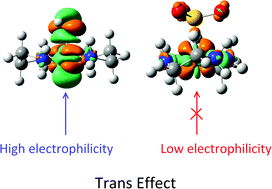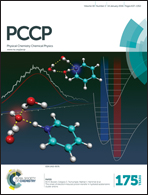Towards the first theoretical scale of the trans effect in octahedral complexes†
Abstract
In this paper, we show that trans effects in octahedral complexes can primarily be related to differences in the ability, for a given ligand, to cede electron density to the metal cation under the influence of the ligand at the trans position. Using tools from conceptual DFT or from related paradigms, we highlight these effects on a set of representative examples and further provide the basis for a computational trans effect scale. This quantification notably retrieves the experimental trans orienting series.


 Please wait while we load your content...
Please wait while we load your content...